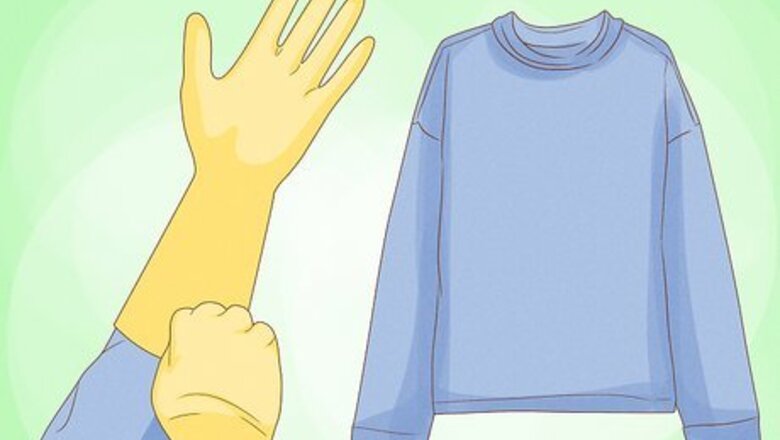
views
Removing the Bushes Manually
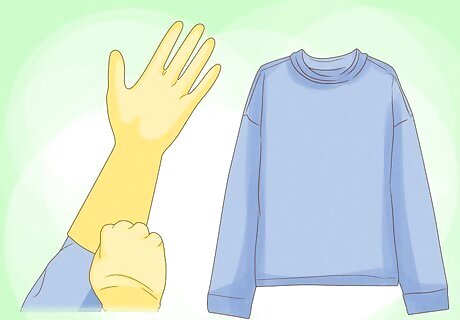
Put on heavy-duty gardening gloves and wear a long-sleeved shirt. You should also wear pants instead of shorts. Raspberry canes are the thorny branches of the plant and they can easily snag on lightweight fabric or bare skin. Wear covered shoes or boots instead of sandals. It's really easy to accidentally step on thorns as you clear the raspberry bushes away.

Use a weed eater or pruning shears to cut each cane 1 foot (0.30 m) from the ground. A weed eater is handy if you're clearing a large area of raspberry bushes. If you don't have this tool, you could use a hedge trimmer or even a pair of pruning shears. The main goal is to cut each cane down close to the ground. If you're using a weed eater, wear hearing protection so you don't damage your ears.
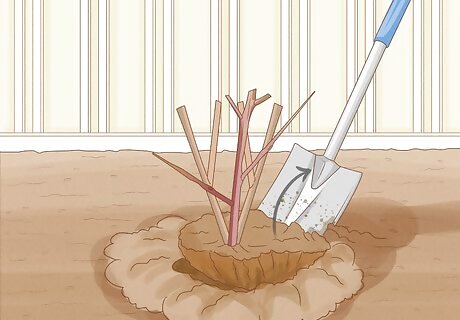
Use a shovel to dig up the stump of each raspberry bush. The canes that you trimmed all stem from a thick stump that contains the roots for the plants. Push your shovel into the soil around the entire stump. Then, pull the stump out. Old or large raspberry bushes can have big root systems, so you may want to ask a friend to help you dig out the stump. It can help to loosen the soil around the stump with a garden fork.
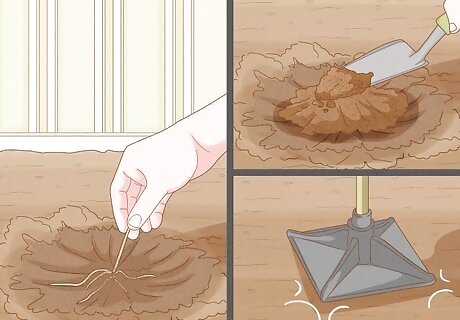
Dig out roots that remain in the soil. Try to remove every part of the raspberry bush, including small or new root growth. Then, fill in the soil to make the ground level. To prevent the plant from coming back, check the area every week and pull up small seedlings that you find. It's a lot easier to remove small raspberry plant growth than it is to remove a large overgrown plant.
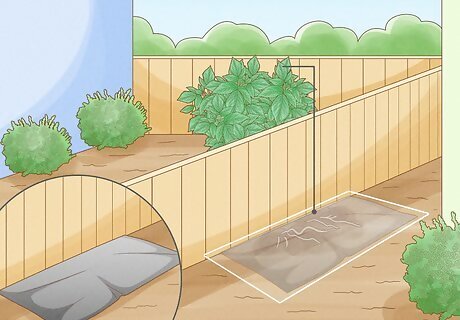
Spread black plastic over exposed roots to act as a barrier. If the raspberry plant is spreading from your neighbor's yard or you can't access the stump, lay down a sheet of heavy black plastic and weigh down the sides with rocks. Leave the plastic in place for 4 to 6 weeks, so the heat and lack of sunlight kill the roots.
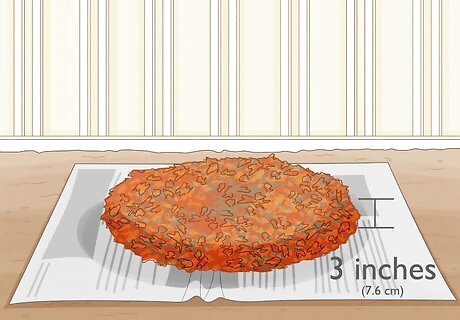
Cover the area with newspaper and mulch to prevent weeds from growing. Spread a layer of cardboard or several layers of newspaper over the space. Then, spread 3 inches (7.6 cm) of mulch over the cardboard or newspaper. This suppresses weeds and breaks down over time, which adds bulk to the soil. It can take a few years to completely kill a raspberry bush. Continue to keep a close eye on this area and pull young raspberry growth as soon as you see it.
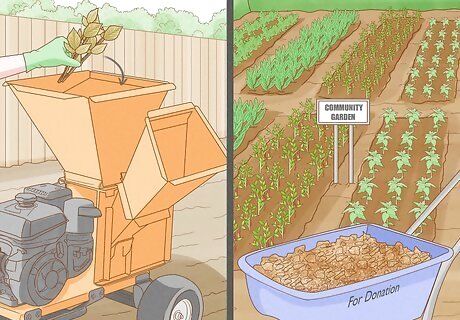
Mulch or burn the raspberry canes and stumps. Rake up all of the raspberry canes. If you've got a lot of raspberry canes and you don't want to waste them, run them through a wood chipper. Then, you can spread this mulch in your garden. If you don't want to use them as mulch, gather the canes in a pile and burn them. Do not compost the canes or raspberries might grow in your heap. If you don't want to mulch or burn the raspberry canes, you can usually put them in your yard waste bin or donate them to a community garden. If the bushes currently have raspberries on them, check the ground for fallen fruit. Since the raspberries contain seeds, you don't want them staying in the soil.
Using Herbicides to Kill the Bushes
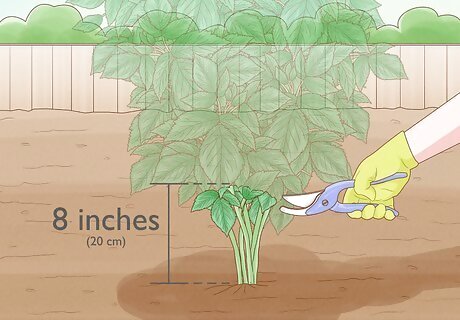
Wear heavy gloves and cut back the blackberry growth to 8 inches (20 cm). If you're dealing with sprawling bushes, use pruning shears or a hedge trimmer to cut the trailing canes so they're about 8 inches (20 cm) from the soil level. If you're killing a new raspberry bush, you can do this at the end of the summer. If you've got older bushes, treat them in the fall before they stop producing.

Purchase an herbicide that contains glyphosate or triclopyr. Glyphosate kills leaves and green growth (including nearby plants and grass) while triclopyr just controls raspberry cane growth. If you plan on growing things in the area after you remove the bushes, use glyphosate since it's inactive in soil. Weedkiller can be an effective option if you're just treating a large space in your yard or spot-treating a small area.
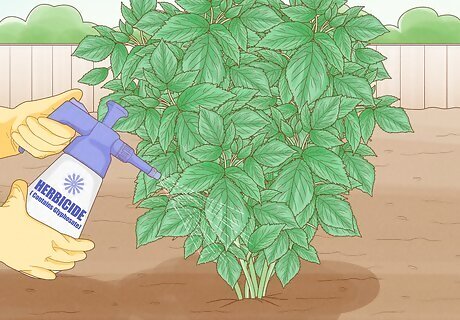
Spray herbicide on the exposed raspberry cane stems. Read the manufacturer's instructions, so you know how to use the product safely. Then, spray the cane stems until they're completely saturated.
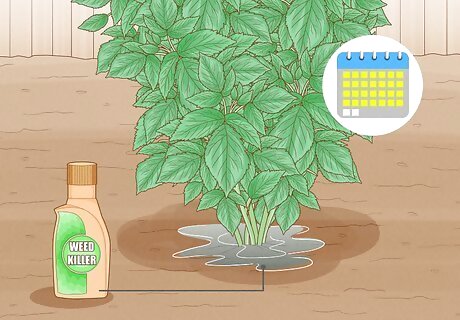
Allow the weedkiller to soak into the raspberry plants' roots for 1 to 4 weeks. It takes time for the herbicide to soak into the plant, so wait until the raspberry cane stems turn brown and shrivel up. Then, you'll know the plant is dead. If you've waited a month and the raspberry cane stems haven't turned brown, apply another round of weedkiller. Keep an eye on the area and apply weedkiller if you notice new growth.



















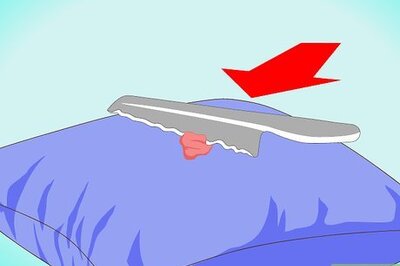
Comments
0 comment